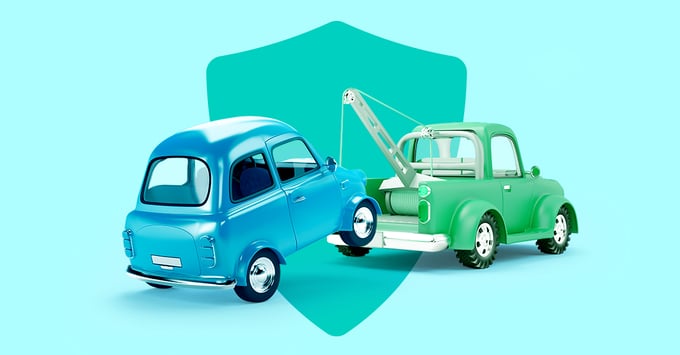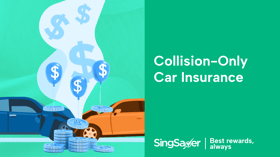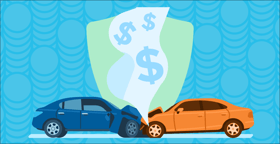Car accidents may happen even to the most careful of drivers. Here is the step-by-step process of what to do if you get into a car accident in Singapore.
Following road traffic rules reduces the risk of car accidents, but being a good driver does not guarantee 100% safety. While human error is the leading cause of car accidents in Singapore, there are also other factors that cause accidents, such as bad weather conditions, road debris, and vehicle defects.
What you immediately do after a car accident can impact your liability and car insurance premiums. Here is the step-by-step process of what you should do if you are involved in an accident.
#1: Stop and assess the condition of those involved in the accident
The first thing you should do in a car accident is to stop your vehicle, activate your hazard lights, and then assess the conditions of those around you – passengers in both your vehicle and others involved in the accident.
During this crucial first step, there are several things you absolutely should not do:
- Do not move your car (even if it is blocking traffic), especially before taking photos
- Do not move anyone injured at the scene of the accident. Allow the medical professionals to do so.
- Do not make any statements that admit fault, even as simple as apologising can impact your liability in the accident.
If there are any serious injuries, immediately call 995 for an ambulance. If the injuries do not appear to be serious, call 1777 for a Non-Emergency Ambulance. Afterwards, call 999 for the police.
Do note that you must file a Traffic Accident Report within 24 hours if it involves:
- Injuries requiring hospitalisation
- Fatalities
- Pedestrians or cyclists
- Hit-and-run
- Damage to government property
- Accidents involving foreign vehicles
Traffic Police reports can be made at any police station or electronically through the Traffic Accident Report Portal.
Step 2: Exchange information with the other parties involved
If there are no serious injuries at the time of the accident, exchange information with everyone involved, including the driver(s) and passenger(s). It’s also useful to get the information of third-party witnesses, such as nearby pedestrians or other drivers.
These are the following information you should get from them:
- Full name
- NRIC
- Mobile number
- Address
- Insurance details
As mentioned above, avoid talking about who’s at fault when exchanging information. Innocent statements may make you appear more liable than you actually are.
#3: Gather evidence from the scene of the accident
Once information has been exchanged, you must gather evidence from the scene of the accident.
If you have a dashcam, remove the memory card, then download and make copies of the footage at your earliest convenience. If you do not have a dashcam, sketch the accident scene later with pen and paper while your memory is fresh.
You should use your mobile phone’s camera to capture the following:
- The entire scene of the accident including the immediate area (from a wide angle, if possible)
- The surrounding area of the accident including any tyre marks and debris trails related to the accident
- Damage to your vehicle with images showing your licence plate (if possible)
- Damage to other vehicles with images showing the licence plate (if possible)
- The licence plates of all vehicles involved in the accident.
Once you have taken photos of the scene, jot down accident details to be included in the Traffic Accident Report. Here are things to take note of:
- Exact location of the accident
- Date and time of the accident
- Weather and road conditions
- Comments from those involved in the accident
#4: Move your car and inform your car insurance provider
Once you’ve done the steps above, you can then proceed to move your car to a safer location, such as a nearby car park. Place a call to your car insurance provider to provide the details of your accident.
If your car is rendered immobile or unsafe to drive, you will need to have it towed. Call your insurer’s roadside assistance hotline if your policy has this option. Otherwise, call your car insurance provider to recommend the closest authorised workshop that provides towing and repair services.
If the accident occurred on an expressway, you can call the Expressway Monitoring and Advisory System (EMAS) at 1800 225 5582. They will tow your vehicle to the nearest car park.
Share every detail of the accident with your insurance provider. You would also need to visit your insurer’s approved Accident Reporting Centre (ARC) within 24 hours to report the accident.
Keep in mind the consequences of not informing your car insurance provider:
- Nonrenewal of your car insurance policy
- Loss of policy protections
#5: Make a claim and have your car repaired (if needed)
If the damage caused by the accident is minor, a private settlement can usually be reached between both parties, which helps protect your NCD and insurance premiums. The party at fault will need to get a repair estimate from an authorised workshop. Both parties can then sign a private settlement form from their insurers if the one at fault agrees to the costs.
If you’re not the one at fault, you can submit a claim with your insurance provider to seek a claim against the driver-at-fault’s insurer. Your NCD remains intact in this instance.
If the accident is your fault, you can still submit a claim to your insurance provider. However, your NCD will decrease, and your insurance premiums will increase during your next renewal period.
What can you do to financially protect yourself in the event of a car accident?
Car accidents can be a costly affair. Not only do you have to pay your policy’s excess amount or the car repair expenses out of pocket, but you may also face higher car insurance premiums as well.
Thankfully, there are a few things you can do to lessen the financial impact of going through a car accident:
- Consider getting a No Claims Discount (NCD) Protector rider for your car insurance policy to protect your existing NCD.
- Be aware of car insurance accident scams. Never engage with any dodgy ‘claims specialists’ who approach you at the scene of an accident. They usually ask for cash in exchange for handling your accident.
- Compare the best car insurance plans in Singapore to see if you are really getting the best coverage and benefits to suit your needs and budget.
Read these next:
A Complete Guide: How to Own a Car in Singapore
Should I Include A New Named Driver Under My Car Insurance?
11 Fun (and Lesser-Known) Facts About Car Insurance For You Car Owners
What to Look for in a Car Insurance When Driving to Malaysia
Similar articles
What To Do If You Get into an Accident With a Foreign-registered Vehicle
15 Ways To Reduce Car Insurance Costs in Singapore 2022
Understanding Private Settlement for Car Accidents: Benefits and Why You Might Choose This Route
Approached by A ‘Claims Specialist’ After A Traffic Accident? Here’s What You Should Do
7 Things to Know When Driving in the Rain (to Avoid Accidents and Costly Repairs)
Being a Safe Driver Can Save You Money. Here’s How.
Third-Party Car Insurance and Beyond: Which One is Best for You?
How to Claim Car Insurance: A Complete Guide to Making a Claim










